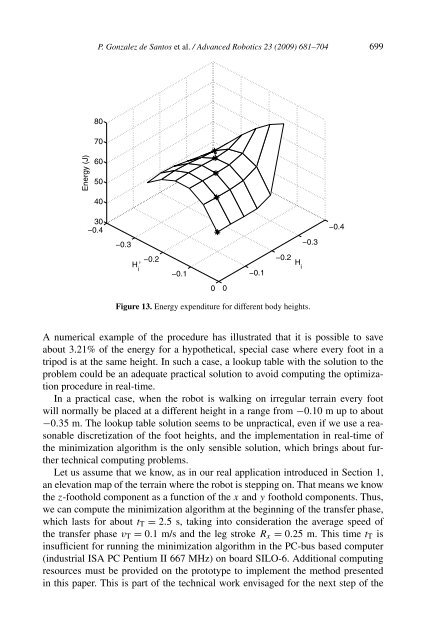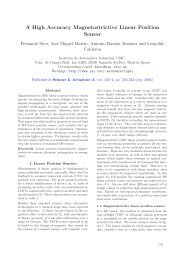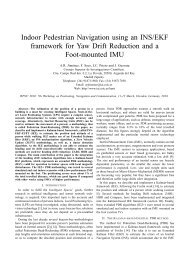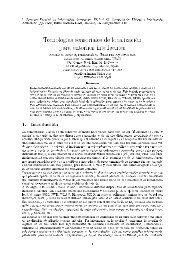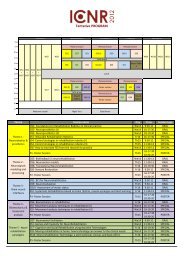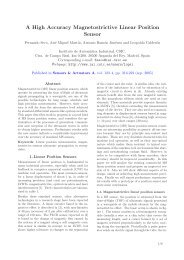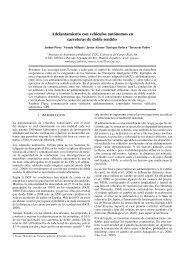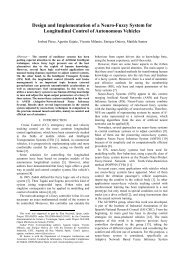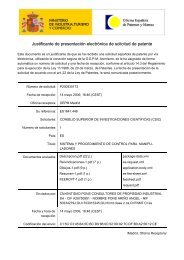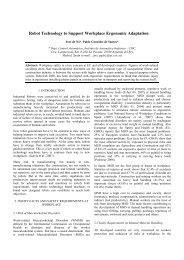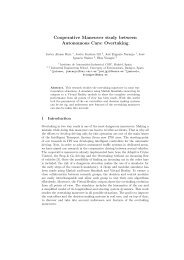Full paper Minimizing Energy Consumption in Hexapod Robots
Full paper Minimizing Energy Consumption in Hexapod Robots
Full paper Minimizing Energy Consumption in Hexapod Robots
You also want an ePaper? Increase the reach of your titles
YUMPU automatically turns print PDFs into web optimized ePapers that Google loves.
P. Gonzalez de Santos et al. / Advanced Robotics 23 (2009) 681–704 699Figure 13. <strong>Energy</strong> expenditure for different body heights.A numerical example of the procedure has illustrated that it is possible to saveabout 3.21% of the energy for a hypothetical, special case where every foot <strong>in</strong> atripod is at the same height. In such a case, a lookup table with the solution to theproblem could be an adequate practical solution to avoid comput<strong>in</strong>g the optimizationprocedure <strong>in</strong> real-time.In a practical case, when the robot is walk<strong>in</strong>g on irregular terra<strong>in</strong> every footwill normally be placed at a different height <strong>in</strong> a range from −0.10 m up to about−0.35 m. The lookup table solution seems to be unpractical, even if we use a reasonablediscretization of the foot heights, and the implementation <strong>in</strong> real-time ofthe m<strong>in</strong>imization algorithm is the only sensible solution, which br<strong>in</strong>gs about furthertechnical comput<strong>in</strong>g problems.Let us assume that we know, as <strong>in</strong> our real application <strong>in</strong>troduced <strong>in</strong> Section 1,an elevation map of the terra<strong>in</strong> where the robot is stepp<strong>in</strong>g on. That means we knowthe z-foothold component as a function of the x and y foothold components. Thus,we can compute the m<strong>in</strong>imization algorithm at the beg<strong>in</strong>n<strong>in</strong>g of the transfer phase,which lasts for about t T = 2.5 s, tak<strong>in</strong>g <strong>in</strong>to consideration the average speed ofthe transfer phase v T = 0.1 m/s and the leg stroke R x = 0.25 m. This time t T is<strong>in</strong>sufficient for runn<strong>in</strong>g the m<strong>in</strong>imization algorithm <strong>in</strong> the PC-bus based computer(<strong>in</strong>dustrial ISA PC Pentium II 667 MHz) on board SILO-6. Additional comput<strong>in</strong>gresources must be provided on the prototype to implement the method presented<strong>in</strong> this <strong>paper</strong>. This is part of the technical work envisaged for the next step of the


